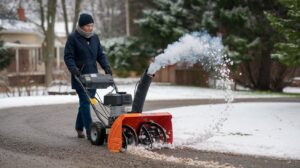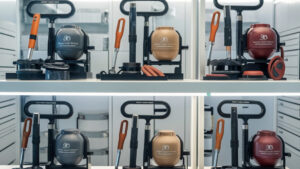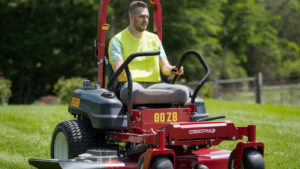Using a snow blower on a gravel driveway can be tricky. A standard snow blower may remove gravel along with the snow, damaging both the surface and the machine.
Recommended Snow Blower for Gravel Driveway 2025
| Recommendation | Product |
| Best Overall | EGO Power+ SNT2405 56-Volt 24 in. 2-Stage Snow Blower |
| Popular Choice | EGO Power+ SNT2112 56-Volt Cordless Snow Blower |
| Best Value | PowerSmart 24-Inch Self-Propelled Gas Snow Blower |
| Best Budget | Snow Joe SJ627E Electric Snow Blower |
| Another Excellent Pick | Husqvarna ST224 Snow Blower |
Using a snow blower on a gravel driveway requires careful consideration. Gravel surfaces can shift, leading to potential damage when clearing snow. Traditional snow blowers are designed for paved surfaces, making them less effective on gravel. This can result in the loss of stones and the formation of ruts, which complicates future snow removal.
To prevent these issues, consider a snow blower with adjustable skid shoes or a lightweight model. Understanding the right techniques can help maintain your driveway while effectively clearing snow. Explore options and tips to ensure safe and efficient snow removal on gravel driveways.
The Challenge Of Snow Removal From Gravel Driveways
Removing snow from a gravel driveway presents unique challenges. Gravel surfaces shift easily under heavy machinery. This can damage both the driveway and your equipment. Understanding these challenges is key to effective snow removal.
Unique Issues With Gravel Surfaces
Gravel driveways have specific issues that complicate snow removal:
- Surface Instability: Gravel can shift, making it hard to maintain a level surface.
- Snow Accumulation: Snow can hide the gravel, leading to deeper drifts.
- Damaged Driveway: Blowers can dig into gravel, causing ruts.
- Limited Visibility: Snow cover can obscure gravel edges.
These factors make snow removal tricky and require careful planning.
Risk Factors For Equipment And Property
Using a snow blower on gravel driveways carries risks:
| Risk Factor | Description |
|---|---|
| Equipment Damage | Blowers may hit rocks, causing costly repairs. |
| Property Damage | Incorrect use can damage landscaping or adjacent property. |
| Injury Risks | Shifting gravel can lead to slips or falls. |
Awareness of these risks can help you avoid costly mistakes.
Always inspect the driveway before using a snow blower. Clear any visible rocks or debris. This can minimize the risk of damage.
Types Of Snow Blowers Suitable For Gravel
Choosing the right snow blower for a gravel driveway is crucial. Not all models work well on this surface. Some can damage the driveway, while others can clear snow effectively without issues. Understanding the types available helps in making a smart choice.
Single-stage Vs. Two-stage Models
Snow blowers come in two main types: single-stage and two-stage.
| Feature | Single-Stage | Two-Stage |
|---|---|---|
| Snow Clearing Depth | Up to 8 inches | More than 8 inches |
| Surface Type | Best for paved surfaces | Works well on gravel |
| Weight | Lightweight | Heavier |
| Price | Generally cheaper | More expensive |
Single-stage models use a single auger to scoop and throw snow. They perform well on paved driveways but struggle on gravel. Their design can pick up gravel and cause damage.
Two-stage models feature an auger and a blower. The auger breaks the snow apart while the blower throws it away. These models can handle gravel surfaces without causing damage.
Features To Look For
Consider several features before buying a snow blower for gravel.
- Adjustable Skid Shoes: They help control the height of the blower.
- Powerful Engine: Look for at least 7 HP for effective clearing.
- Wide Clearing Width: A wider path reduces clearing time.
- Directional Chute: This feature allows better snow placement.
- Durable Build: Materials should withstand rough conditions.
These features enhance performance on gravel driveways. Always choose a model that fits your specific needs.
Preparing Your Gravel Driveway Before Snowfall
Getting ready for winter is crucial for your gravel driveway. Proper preparation helps ensure smooth snow removal. Follow these simple steps to make your driveway snow blower-friendly.
Clearing Debris
Before the snow falls, clear your driveway of any debris. This includes:
- Branches
- Leaves
- Stones
- Trash
Debris can damage your snow blower. It can also create uneven surfaces. Take time to clean your driveway thoroughly.
Marking Boundaries
Mark the edges of your driveway to guide your snow blower. Use durable markers, such as:
- Stake flags
- Reflective tape
- Bright paint
Place markers a few feet apart. This helps you avoid damaging your gravel. It also keeps your path clear during heavy snowfall.
| Marker Type | Benefits |
|---|---|
| Stake Flags | Easy to see and reposition |
| Reflective Tape | Highly visible at night |
| Bright Paint | Long-lasting and weather-resistant |
Marking boundaries helps you work efficiently. It also ensures safety while using your snow blower. Prepare your driveway well and enjoy a hassle-free winter.
Adjusting Your Snow Blower For Gravel
Using a snow blower on a gravel driveway requires careful adjustments. Proper settings ensure effective snow removal while protecting your driveway. Follow these tips to get the best results.
Setting The Right Height
Finding the correct height is crucial for snow removal. Here’s how to set your snow blower:
- Check the manufacturer’s recommendations for your model.
- Adjust the skids to the right height. Aim for 1-2 inches above the gravel.
- Test the height on a small section of the driveway.
Keep an eye on the depth of snow. Adjust the height as necessary for varying snow levels. This helps avoid damage to your gravel surface.
Modifications To Avoid Gravel Pickup
Preventing gravel pickup is essential for maintaining your driveway. Use these modifications:
- Install a gravel guard: This device helps keep gravel in place.
- Use wider skids: Wider skids distribute weight better and reduce gravel pickup.
- Adjust the auger speed: Lower speeds help reduce the chance of picking up gravel.
Always monitor your snow blower’s performance. Make adjustments based on conditions. This ensures a clean driveway without damaging the surface.
Operating Techniques For Minimizing Damage
Using a snow blower on a gravel driveway can be tricky. The right operating techniques can help protect your driveway. Follow these tips to minimize damage while clearing snow.
Best Practices For Blowing Snow
- Adjust the Blower Height: Set the snow blower’s height to avoid scraping the gravel.
- Use a Skid Shoe: This helps maintain the right distance from the ground.
- Clear Early: Remove snow before it becomes compacted.
- Blow with the Wind: This reduces the chance of blowing gravel.
- Avoid Excessive Speed: Slow down to maintain better control.
Pacing And Overlap Techniques
Proper pacing and overlap can help protect your driveway. Follow these techniques for the best results:
- Maintain a Steady Pace: A steady speed prevents damage.
- Overlap Passes: Overlap each pass by 30%. This ensures complete snow removal.
- Turn Gently: Avoid sharp turns to minimize gravel displacement.
- Work from the Center: Start from the middle and move outward.
| Technique | Description |
|---|---|
| Adjust Blower Height | Keep the blower above gravel to avoid damage. |
| Use Skid Shoe | Helps maintain distance from the ground. |
| Clear Early | Prevent snow from packing down. |
| Overlap Passes | Ensures no snow is left behind. |
Maintenance Tips For Post-snow Blowing
After using a snow blower on a gravel driveway, proper maintenance is essential. This keeps the equipment in good shape and maintains the driveway’s condition. Here are important tips to follow.
Cleaning And Inspecting Equipment
Cleaning your snow blower after each use prevents rust and damage. Follow these steps:
- Remove Snow Residue: Clear off any snow stuck on the blower.
- Check for Debris: Inspect for gravel, dirt, or other materials.
- Clean the Blades: Use a brush to clean the blades carefully.
- Inspect Belts and Cables: Look for any wear or fraying.
Regular inspections can save you from costly repairs. Always check the fuel and oil levels too. Ensure they are clean and filled appropriately.
Gravel Driveway Repair
After snow removal, inspect your gravel driveway for damage. Snow blowers can displace gravel. Follow these steps to keep your driveway in good shape:
- Fill in Potholes: Use gravel to fill any holes.
- Re-level the Surface: Rake the gravel for even distribution.
- Compact the Gravel: Use a tamper to compact loose areas.
Regular maintenance of your driveway helps avoid bigger issues. Ensure proper drainage to prevent water buildup. This keeps your driveway functional and safe.
Safety Measures During Snow Blowing
Using a snow blower on a gravel driveway can be tricky. Safety should be your top priority. Following proper safety measures can prevent accidents and injuries. Here are essential safety tips to consider while snow blowing.
Personal Protective Equipment
Wearing the right gear is crucial. Here are some recommended items:
- Gloves: Protect your hands from cold and injury.
- Boots: Choose waterproof, insulated boots with good grip.
- Goggles: Shield your eyes from flying snow and debris.
- Ear Protection: Wear ear muffs to block loud noise.
- Warm Clothing: Dress in layers to stay warm.
Always inspect your gear before starting. Ensure everything fits well and is in good condition.
Awareness Of Surroundings
Stay alert while snow blowing. Here are key points to remember:
- Check the Area: Look for obstacles like rocks or toys.
- Keep Children Away: Ensure kids are indoors or at a safe distance.
- Watch for Pets: Make sure pets are secured and out of the way.
- Be Mindful of Power Lines: Stay clear of any overhead lines.
- Observe Weather Changes: Stop if conditions worsen or visibility drops.
Awareness can prevent accidents. Always keep your focus on the task at hand.
Alternatives To Using A Snow Blower On Gravel
Using a snow blower on a gravel driveway can be tricky. It often pulls up gravel along with the snow. Consider these alternatives for effective snow removal.
Manual Snow Removal Options
Manual methods can be effective and less damaging to gravel. Here are some popular options:
- Shoveling: A sturdy shovel works well for light snow.
- Snow Rakes: These tools help clear snow from roofs and driveways.
- Snow Pushers: Wider than shovels, they can move more snow quickly.
Choose a method based on snow depth. For deeper snow, shoveling may take longer. A snow pusher can help speed up the process. Always wear gloves and boots for safety.
Hiring Professional Services
Consider hiring professionals for snow removal. They have the right tools and experience. Here are the benefits:
| Benefits | Description |
|---|---|
| Efficiency | Professionals can clear snow quickly. |
| Safety | They know how to handle slippery conditions. |
| Less Stress | No need to worry about snow accumulation. |
Check local services for rates and availability. Hiring experts can save time and effort. It ensures your driveway stays clear and safe.

Frequently Asked Questions
Can I Use A Snow Blower On Gravel?
Yes, you can use a snow blower on gravel. However, it’s essential to adjust the height of the snow blower to avoid picking up gravel. This adjustment helps prevent damage to the blower and ensures efficient snow removal while protecting your driveway.
What Type Of Snow Blower Is Best For Gravel?
A snow blower with adjustable skids is ideal for gravel. These skids allow you to set the height, preventing the blades from digging into the gravel. Look for models designed specifically for uneven surfaces to enhance performance and durability on gravel driveways.
How Do I Prevent Damage To My Gravel Driveway?
To prevent damage, always adjust the snow blower’s height. Start with a higher setting and gradually lower it if needed. Regularly inspect your driveway for loose gravel and fill any depressions to maintain an even surface, which helps reduce potential damage during snow removal.
What Are The Benefits Of Using A Snow Blower On Gravel?
Using a snow blower on gravel saves time and effort. It efficiently clears snow without the need for manual shoveling. Additionally, it minimizes back strain and provides a cleaner surface for driving and walking, enhancing safety during winter weather.
Conclusion
Using a snow blower on a gravel driveway requires caution and technique. Proper adjustments can prevent damage to both the driveway and the machine. By following the right practices, you can efficiently clear snow while maintaining your gravel surface. Enjoy a hassle-free winter with a well-prepared driveway.
Stay safe and warm!








